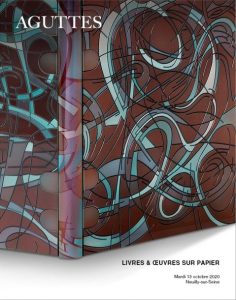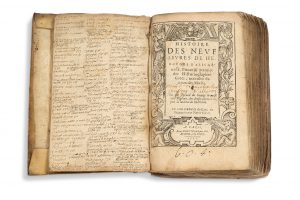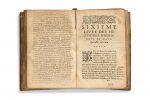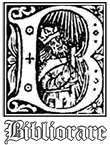HERODOTE (Ve siècle avant J.-C.)
Histoire des Neuf Livres de Herodote d'Alicarnasse, Prince & premier des Historiographes Grecs, intitulez du nom des Muses. Paris, Claude Micart, 1575.
In-16, vélin souple, auteur manuscrit au dos et...
Description
Seconde édition de la traduction de Pierre Saliat dont la première parue pour la première fois en 1556 au format in-folio. L'ouvrage est complété par George Gemisthe dit Plethon, sur l'histoire des Grecs après la mort d'Epaminondas à Matinée. Titre orné d'un bel encadrement Renaissance et marque typographique de C. Micard à la fin du premier cahier.
La popularité d'Hérodote sous la Renaissance fut immense. Sa manière très libre d'écrire l'histoire, mêlant récits de voyages, étude des moeurs, réflexions politiques et légendes devint un modèle pour les écrivains du XVIe siècle. Le découpage en 9 livres correspond aux neuf muses. On y retrouve l'histoire de l'empire Perse, les guerres médiques et des digressions sur Athènes et Sparte.
(Nombreuses annotations manuscrites sur les feuillets blancs et en marge. Salissures sur les plats, brunissures, cahiers déréglés, mouillures, rousseurs).
History of the Nine Books by Herodotus of Alicarnassus, Prince & first of the Greek Historiographers, named after the Muses. Paris, Claude Micart, 1575.
In-16, soft wove vellum, author's handwritten spine and manuscript title on first cover, traces of binding (Binding of the time).
Second edition of Pierre Saliat's translation, first published in 1556 in folio format. The work is completed by George Gemisthe dit Plethon, on the history of the Greeks after the death of Epaminondas at Matinee. Title decorated with a beautiful Renaissance frame and typographical mark of C. Micard at the end of the first section.
Herodotus' popularity during the Renaissance was immense. His very free way of writing history, mixing travel accounts, study of customs, political reflections and legends became a model for 16th century writers. The division into 9 books corresponds to the nine muses. It includes the history of the Persian Empire, the medieval wars and digressions on Athens and Sparta.
(Numerous handwritten annotations on the blank pages and in the margins. Dirt on the plates, browning, loose notebooks, wetness, freckles).





